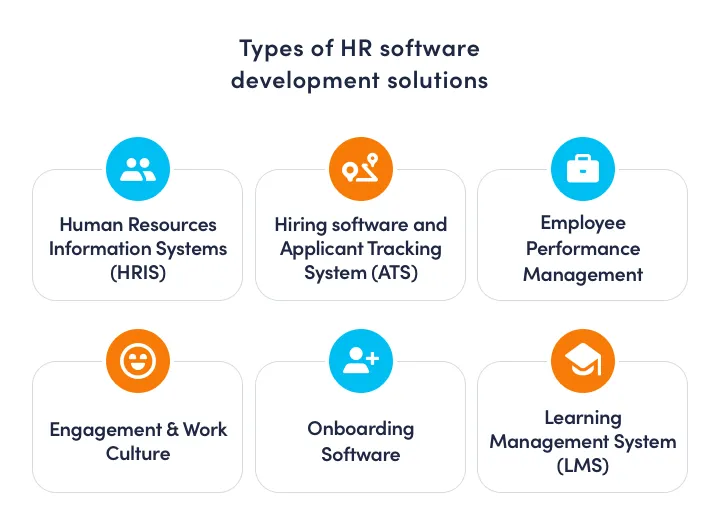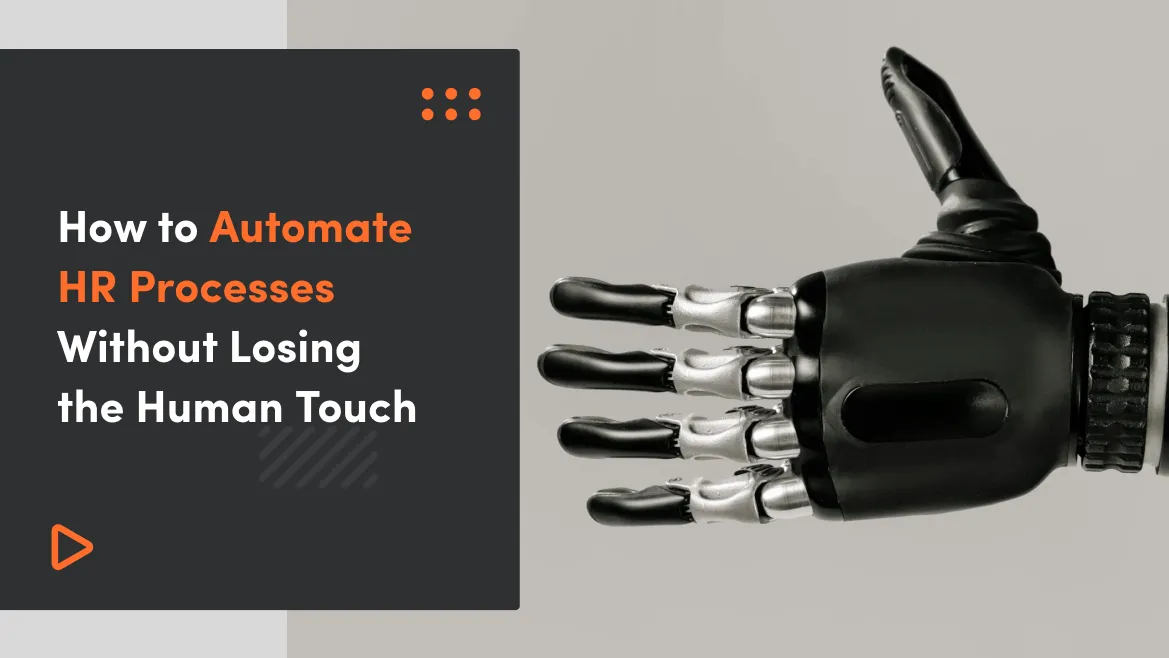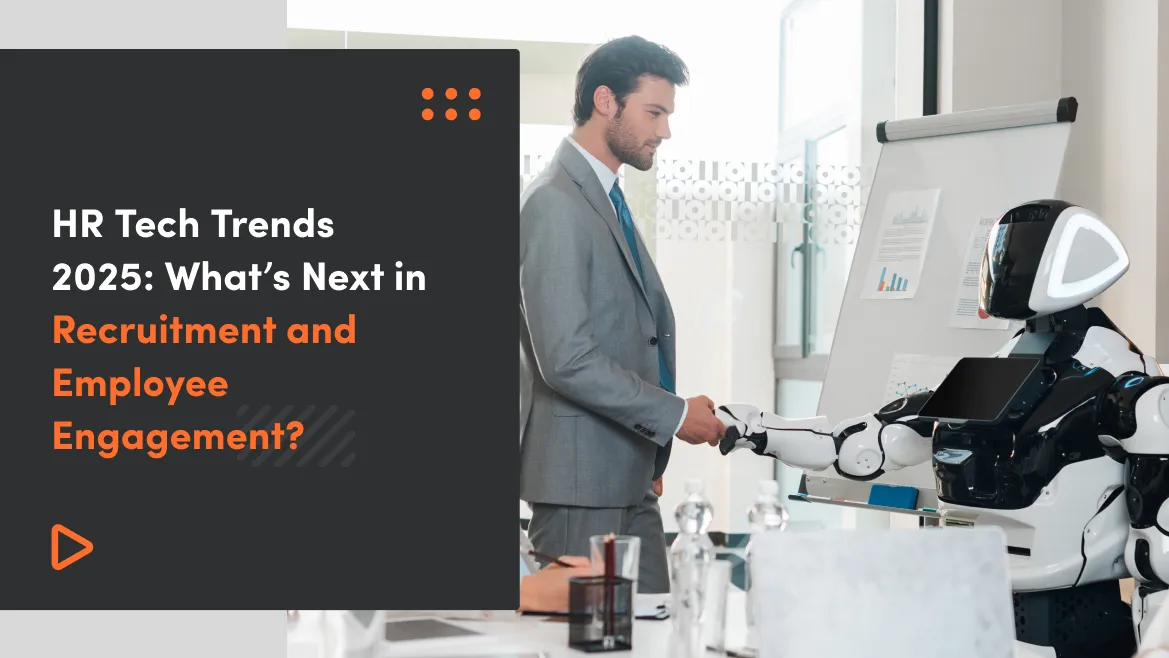Human Resources is the heart of any organization, and managing it effectively needs a central hub that collects, monitors, and analyzes all information and processes as per the need. Today, we have advanced solutions like the Human Resource Management System, thanks to technology.
According to research by MarketsandMarkets, the global Human Capital Management industry size is expected to grow from USD 17.6 billion in 2020 to USD 24.3 billion by 2025, at a Compound Annual Growth Rate (CAGR) of 6.7% during the forecast period. The growth is driven by many factors, including dual forces of cloud replacement, digital adoption, and COVID-19. In 2020, Human Resource Management application developing companies swiftly turn around their plans due to COVID-19 impacts to focus on cost optimization and uptake of remote working.

Did you know that Facebook has announced it would allow many employees to work from home permanently? The decision is also taken after seeing disastrous conditions during the COVID-19 Pandemic. A major shift in the business world has taken from 9 to 5 job to a proper remote working environment. To manage people working from home, every company needs a center point of communication, management, monitoring, and analysis - that is HRM software (Human Resource Management Software).
What Is HRM Software?
Human Resource Management Software is designed to help management and employees to perform at their fullest capacity, boost productivity, and overall employee satisfaction. The HR software is used by all sizes of businesses, from small to large corporations.
The purpose of using HR Software is to integrate recruiting, onboarding, workforce management, time scheduling and management, payroll solutions, and human capital management. The software can be called human resource management systems (HRMS), human capital management (HCM), and Human resources information systems (HRIS).
In this article, I will provide the definitions, core HR software features and key benefits of each type of HR solution.
Types of Human Resource Management Software
It doesn’t matter what lifespan your business is. The fact remains the same: You need HR software and HR tools. The fact remains the same: You need HR software. If your company consists of only 12 employees, even then, it’s unlikely that Excel sheets, paper files, and emails will be enough to keep you on top of processes and compliant. If you don’t manage your workforce effectively, you can’t control your business.

HR Software differs in types based on company size and lifespan. Some HR software types are good enough for management, and some provide extra miles for companies that are growing rapidly. As businesses grow and change, so do their HR needs, and figuring out when to invest in dedicated software is crucial. Check out the different types of HR solutions, their features, and benefits below:
#1: Human Resources Information Systems (HRIS)
Definition of HRIS:
Human resources information system (HRIS) can be defined as a software or online solution that is used for data entry, data tracking, and the data management of all human resources operations of an organization.
An HRIS is also referred to as an HRMS (human resources management system) since it aids in effective human resource management and planning. It is the basic type of HR software used by any size the company.
Let's explore the fundamental features of HRIS (Human Resource Information System) that are commonly needed by most organizations in various combinations, focusing on core HR functions.
Features of HRIS:
Let’s take a look at the basic HRIS features that most organizations require in some combination.
- The main offering of an HRIS is a ready-access database where all employee information can be stored and managed effectively. The HR department or anyone having access to the software can input employees’ personal information into the system. The purpose of collecting information is to access it later when needed from anywhere at any time. The data may include compensation information, emergency contact details, and education history to present contact information, learning metrics, and performance review scores. The database is the heart of HR functions and can be more effective with an online or cloud-hosted backup for a mostly paperless office.
- Managing employee attendance and tracking working hours throughout the entire employee lifecycle is a challenging task. In today's technologically advanced world, many offices rely on biometric systems to record employees' time in and out or allow employees to manually log their time using machines. Additionally, HRIS (Human Resource Information System) provides a time-tracking feature that enables management to monitor employees' leave status and approve or disapprove leave applications.
- With the HRIS portal, the HR manager can download the details of an employees’ hours, leaves, and attendance to accumulate the net salary for a month. An HRIS payroll software also leads to improved tax compliance, especially for organizations that deal with multiple tax levels.
- Most HRIS offers limited user access to employees. The feature is aimed to create a culture where employees have more operational freedom. Using this access, employees can update their information, keep a record of their attendance, apply for leave, and check the status of their remaining annual leaves.
- HRIS also helps HR departments to retain and recruit the right talent in an organization. HRIS tools can improve the candidate experience while also making it easier for recruiters to source, track, and engage with the right talent.
Thanks to the features this human capital management system offers, HR teams can effortlessly operate on multiple processes, from resource planning to continuous feedback.
Benefits of HRIS:
Here’re some benefits of an HRIS.
- An HRIS reduced the cost of data storage since it is a one-time investment to build the platform
- It provides agility in retrieving and analyzing employees’ information
- An HRIS eliminates duplication of hr processes, which saves time, money, and energy
- With HRIS, Organizations can have on-demand availability of data at any time
- It provides stronger analysis - hence more intelligent decisions
- It offers relevant career planning that can be communicated better
- With HRIS, organizations get improved quality of reports and insights
- Increased adaptability for the organization, since access to the right information, increases awareness of both the internal and external environment
- It offers greater transparency and engaging employee experience
#2: Hiring software and Applicant Tracking System (ATS)
Definition of ATS:
A Hiring and Applicant Tracking System, also known as an ATS, is a software application that automates the hiring and application tracking process.
ATS software increases the efficiency and productivity of the overall HR department as well as recruiters, with a centralized database. ATS software can improve hiring managers' efficiency while attracting top talent. The ATS can perform the following functionality:
- Allow scanning, sorting, and ranking candidates for a particular Job
- Post to a wide-range of job boards with a single submission
- Generate and send interview requests to potential candidates via email and SMS
- Build and manage the career page of the organization
- Keep all teams on track to meet recruiting goals
Features of ATS:
- ATS allows the HR department to communicate with the teams and suitable candidates. It can help connect the candidates with the hiring department for interviews. After interviews, the hiring team can leave notes and feedback about the candidates. Due to the candidate tracking system, candidates no longer slip through the cracks and feel more connected to the company throughout the hiring journey.
- ATS comes with a built-in analytic tool to measure the success of recruiting strategies. The HR department and management of the organization can use the real-time data to forecast staffing needs, build a recruiting plan, maintain an active workforce, and determine the essential metrics' quality and cost.
- With a perfect ATS solution, a hiring team can attract and engage the right job applicants. This can be done rightly with the help of different hiring strategies such as CRM campaigns, events, social media, agencies, and referrals.
- Compliance is another big hassle for organizations. It’s big, complex, and continually changing. A global organization may be supporting everything from GDPR (General Data Protection Regulation) to EEOC (Equal Employment Opportunity Commission). Compliance varies based on the country where the business is registered and operational. Having the right hiring practices and a modern ATS solution to support this ever-challenging environment is critical.
Benefits of ATS:
- It helps to manage recruitment requirements across organizations
- It allows the hiring team to effectively communicate the required skills and capabilities to the HR department
- It helps to attract the right talent for the job
- It helps to smooth the communication from shortlisting to hiring a candidate with the right skillset
- ATSs are also a valuable weapon in the war for talent
#3: Employee Performance
Definition of Employee Performance System:
Employee Performance Software helps organizations to review the performance of an employee based on set individual goals. It is also designed to collect feedback, store documents, and report important performance metrics to stakeholders.
Features of Employee Performance System:
- Creating Competencies
- Setting Goals
- Employee Feedback Portal
- 360 Degree Reviews
- Annual Reviews and Increments
Benefits of Employee Performance System:
- Employee Performance system helps improve productivity and retain high performers in boosting sales, profit, and engagement.
- Data-Driven from Employee Performance Management can help the business grow in the right direction by managing vast amounts of employee data and tracking important trends over time.
#4: Employee Engagement & Work Culture System
Definition of Employee Engagement System:
Employee Engagement helps organizations to improve employee sentiment and increase individual and team engagement. It is done through everyday work priorities, feedback, coaching, and analytics.
Features of Employee Engagement:
It is a centralized solution where employees can enrol in benefits or change options themselves instead of wasting productive time filling out a form for HR to enter into their system manually. Employee Engagement also troubleshoots questions on their own to help monitor benefits costs, which is critical to maximizing ROI.
Benefits of Employee Engagement:
- Employee access to personal information
- Insurance information
- 401(k) information and enrollment
- Life events management
- Wellness programs
- Carrier feeds (electronic data interchange)
#5: Onboarding Software
Definition of Onboarding Software:
Onboarding software is designed to walk a new employee through all the necessary steps to become a full-fledged and productive cog of the organizational machine, from digitally signing important paperwork to completing new employee training tasks.
Features of Onboarding Software
- The main feature of Onboarding Software is to align the signing process of paperwork digitally. Sending emails to the new hire regarding compliance policies and organizational decorum.
- An Onboarding system should have the capability to customize training material and methods based on the hiring department's requirements.
- An Onboarding software should provide newbies an early chance to interact with their manager and coworkers to be more comfortable and productive from day one.
Benefits of Onboarding Software:
- It reduces the time that a new employee takes to become productive by automating tedious paperwork so workers can dive into the nitty-gritty of their positions sooner.
- It helps new hires to engage with the team more efficiently even before their first-day start in the organization through the portal.
#6: Learning Management System (LMS)
Definition of LMS:
An LMS or an eLearning System is designed to track an employee’s education, certifications, qualifications, and skills. It connects the employees with materials or courses available to develop their skills.
Features of LMS:
- Social learning
- Talent Management
- Mobile learning
- eCommerce modules
- White-labeling and customization
- Gamification features
- Certifications (Grading/Scoring feature)
Read more about LMS and how to create one from Scratch
Benefits of LMS:
- All learning and training material is available at a single platform that employees can access anytime from anywhere.
- An LMS takes every department and employee's needs and creates customized courses. Each department/employee can be given a unique learning experience by creating a learning path using different methods. A personalized approach is tough to achieve in a traditional classroom setting.
- An LMS provides a perfect engagement between the trainer and the organization. Trainer and trainee can communicate via different platforms, even a built-in chat feature. A trainer can also communicate with the management regarding the progress of the trainee.
- An LMS saves business hours to manage and train employees, which ultimately enhances job performance.
- LMS can ensure that all of your employees are on the same page about the company policies, and the compliances are always followed.
Try our developers.
Free for 2 weeks.
No risk. Just results. Get a feel for our process, speed, and quality — work with our developers for a trial sprint and see why global companies choose Selleo.
Benefits of a Human Resource Software
The benefits of HR software varies widely based on the type of software and the company’s characteristics. Some basic benefits of an all-encompassing HR software solution are as follows:
Payroll Management
Payroll is the biggest company expense that occurs monthly. Managing payroll can be hassle-free by using an effective HR system. It will save time and trouble while avoiding employee dissatisfaction caused by the error.
An HR software helps to integrate time and attendance to calculate employees’ salaries and help a company better control payroll accounts. It also allows companies to keep organization per hour cost based on compliance policies. Integrated analytics can enable better real-time decision making and planning.
Self-Service Feature Benefits
The self-service option in an HR solution helps improve communication between employees and management. It also boosts autonomy within the organization.
The HR management software helps employees to access information and schedules, update information, and leave requests. It allows employees to take charge of their development and training, which improves satisfaction and productivity while saving management time.
Improve Recruitment Process and Strategies
Recruiting the right talent for the job is becoming more employee-centric and digitized. Using an HR solution to help with recruitment can assist with attracting the right talent. HR software integrates with top job boards and social media platforms to post jobs where the potential candidates can see them. HR software solutions may also assist with the interviewing and onboarding processes for more streamlined hiring.
Conclusion
Human Resource Management Software is a dire need of any organization irrespective of the number of employees. Ideally, the HR solution should fit with the organization’s vision and needs. If you have decided that HR software is right for your company, we can help you start the selection process. If you are looking to build the best HR software solution for your company, you can contact us HERE!





